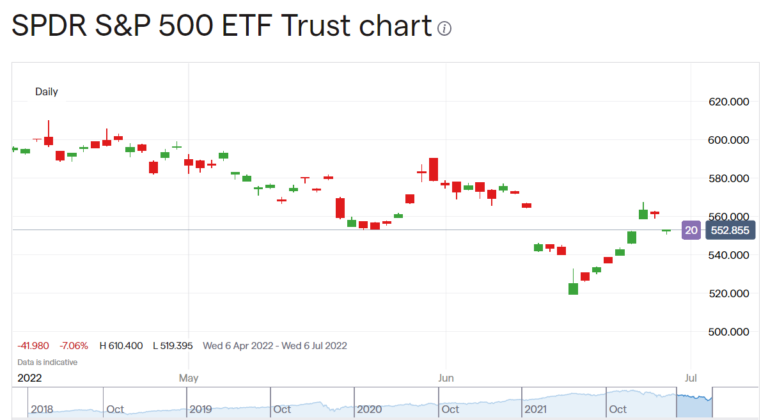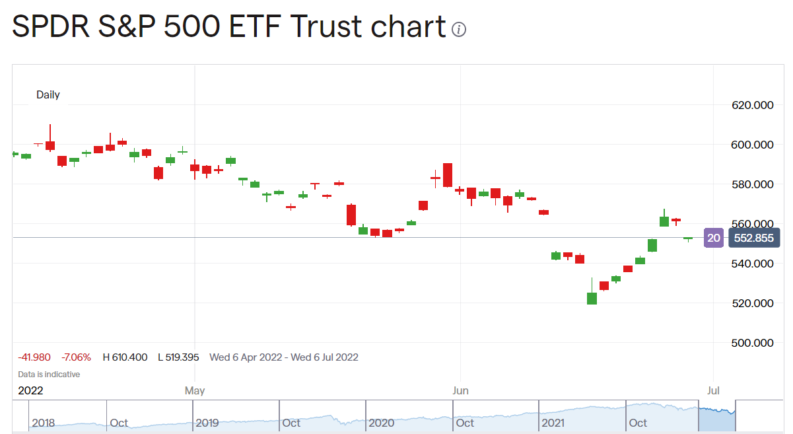
Key points:
- An S&P 500 ETF like SPY can be a way to trade macroeconomic news
- Revised US GDP figures are out today
- This is the sort of news that can move the whole market
The US GDP figures are out this morning and one possible idea is to use the SPDR S&P 500 ETF Trust (NYSEARCA: SPY) as a method of trading those figures. The issue today with the GDP figures is whether the US economy is, officially, in recession or not. Negative growth would mean yes, this is could be a recession. Positive growth would mean no, it isn't – by that official measure at least.
SPY is an ETF which tracks the S&P 500 Index. It's unleveraged, so it can be a part of a long term holding if that's what an investor desires to do. But given the liquidity in it it can also be used as a way to trade short term – even intraday – movements in the S&P Index. The near total lack of a spread makes it suitable for that purpose.
The question though is when might we want to try and trade the large cap part of the market? The answer being when there's the one single piece of economic news which could push it one way or the other. The US GDP figures are an example of this. It's worth noting that the UK produces monthly GDP numbers but the US doesn't. The calculation is only released quarterly. It's also worth noting that the US figures are released on an annualised basis – this is what growth would be if the whole year were like this quarter. The UK numbers are not annualised in this fashion.

Also Read: What Are Exchange Traded Funds?
The importance of today's GDP figures is that last quarter showed the US economy to be shrinking – on a real, inflation adjusted basis. OK, it was 1.5% but that's still a fall. The importance of this is that we define a recession as being two consecutive quarters of negative economic growth.
Today's figures are not, in fact, the GDP figures for the second quarter of this year, Instead, they're the third attempt at getting them right. By now enough late information has come in that it's possible to be accurate about what that past economic performance was. Revisions are frequent and can be large, whole percentage points are not uncommon.
Today's figures do not update us as to what more recent economic performance has been, rather, give us a more accurate picture of that past. But US GDP figures, even these revisions, are important enough that they can move the whole market. Which is why trading something that represents the bulk of the market – and S&P 500 ETF – can be a part of a strategy to trade these GDP figures.
As to which way the market will go that obviously depends upon the figures themselves. Even then it's not entirely certain. A revision upwards to growth would suggest that the Federal Reserve has more room to raise interest rates before causing a recession. A significant move down would lower the pressure on the Fed to be aggressive in raising rates. It's possible to gain the perverse result that worse GDP numbers would boost the market, as this would mean that interest rates might rise less, that inflation will moderate of its own accord. Trading macroeconomic numbers is not easy but whole market ETFs are a useful way of doing so.
